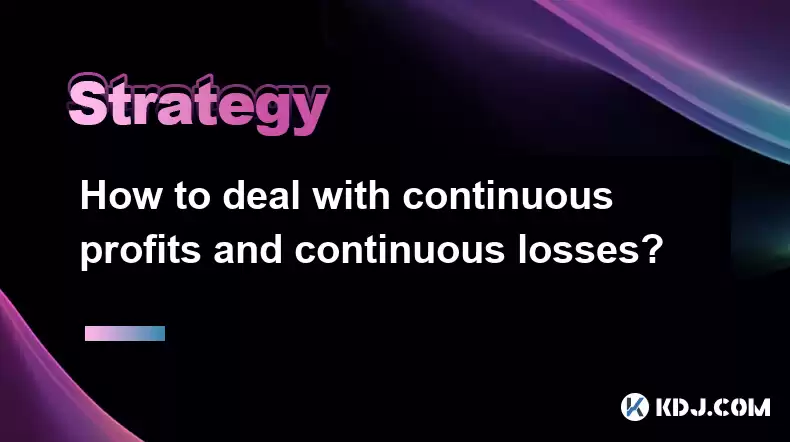-
 Bitcoin
Bitcoin $119300
2.40% -
 Ethereum
Ethereum $4254
-0.20% -
 XRP
XRP $3.184
-1.38% -
 Tether USDt
Tether USDt $1.000
0.00% -
 BNB
BNB $803.9
0.58% -
 Solana
Solana $183.1
1.50% -
 USDC
USDC $0.0000
0.01% -
 Dogecoin
Dogecoin $0.2339
-2.87% -
 TRON
TRON $0.3384
0.88% -
 Cardano
Cardano $0.8018
-0.29% -
 Hyperliquid
Hyperliquid $45.13
3.14% -
 Chainlink
Chainlink $22.10
0.96% -
 Stellar
Stellar $0.4439
-0.94% -
 Sui
Sui $3.875
-0.73% -
 Bitcoin Cash
Bitcoin Cash $570.7
0.24% -
 Hedera
Hedera $0.2589
-2.90% -
 Ethena USDe
Ethena USDe $1.001
-0.01% -
 Avalanche
Avalanche $23.83
-1.73% -
 Litecoin
Litecoin $123.8
2.61% -
 Toncoin
Toncoin $3.351
-1.13% -
 UNUS SED LEO
UNUS SED LEO $9.103
1.13% -
 Shiba Inu
Shiba Inu $0.00001356
-1.40% -
 Uniswap
Uniswap $10.93
-0.19% -
 Polkadot
Polkadot $4.057
-1.97% -
 Dai
Dai $1.000
0.01% -
 Cronos
Cronos $0.1646
4.66% -
 Ethena
Ethena $0.7974
8.11% -
 Pepe
Pepe $0.00001208
-2.89% -
 Bitget Token
Bitget Token $4.445
-1.70% -
 Monero
Monero $268.8
-2.00%
How to deal with continuous profits and continuous losses?
Continuous profits can lead to inflated risk tolerance, warranting periodic reassessment of risk tolerance and adjustment of investment plans to maintain alignment.
Feb 25, 2025 at 10:30 am

Key Points
- Understanding the nature of cryptocurrency volatility
- Establishing a risk management strategy
- Developing an investment plan aligned with risk tolerance
- Implementing profit-taking strategies
- Managing emotional responses during loss scenarios
Dealing with Continuous Profits
1. Reassess Risk Tolerance and Investment Plan
Continuous profits may inflate risk tolerance, leading to overconfidence. Regularly reassess risk tolerance and align investment decisions accordingly. Consider adjusting the percentage of profits allocated to different asset classes or increasing diversification.
2. Implement Profit-Taking Strategies
Establish clear guidelines for profit-taking to lock in gains and mitigate potential losses. This could involve setting percentage targets (e.g., taking profits once a certain return is achieved) or dollar amounts (e.g., exiting when profits reach a specific threshold).
3. Consider Rebalancing Portfolio
As profits accumulate, the portfolio can become unbalanced. Rebalance periodically to maintain the desired risk-reward profile and prevent excessive exposure to any particular asset.
Dealing with Continuous Losses
1. Stay Calm and Assess the Situation
Emotional reactions during losses can lead to poor decision-making. Stay calm, analyze the market conditions, and identify potential reasons for the decline. Consider factors such as broader market trends, specific cryptocurrency news, or technical indicators.
2. Reevaluate Investment Plan
Losses may indicate a need to adjust the investment plan. Consider the initial investment thesis, assess whether it still holds true, and make necessary changes to the portfolio or trading strategy.
3. Implement Stop-Loss Orders
Use stop-loss orders to limit potential losses on specific assets. A stop-loss order sells an asset automatically when it reaches a predetermined price, preventing further losses. This can help manage risk and protect capital.
4. Consider Dollar-Cost Averaging
If losses persist, consider implementing dollar-cost averaging. This involves investing a fixed amount at regular intervals, regardless of market conditions. By averaging out the purchase price, this strategy can reduce the impact of volatility and potentially improve returns over time.
FAQs
Q: What is the key to successful cryptocurrency investing?
A: Sound risk management, a disciplined investment plan, and the ability to control emotions during both profits and losses.
Q: How do I determine my risk tolerance?
A: Assess factors such as your investment goals, time horizon, and financial situation to establish an appropriate risk tolerance level.
Q: What is a stop-loss order and how do I use it?
A: A stop-loss order sells an asset automatically when it reaches a predetermined price, limiting potential losses. Traders use stop-loss orders to manage risk and protect capital.
Disclaimer:info@kdj.com
The information provided is not trading advice. kdj.com does not assume any responsibility for any investments made based on the information provided in this article. Cryptocurrencies are highly volatile and it is highly recommended that you invest with caution after thorough research!
If you believe that the content used on this website infringes your copyright, please contact us immediately (info@kdj.com) and we will delete it promptly.
- KiwiSavers, Crypto Returns, and Digital Investment: Are Kiwis Missing Out?
- 2025-08-11 06:30:11
- Ruvi AI's Sales Surge: Could It Outpace Tron in the Crypto Race?
- 2025-08-11 06:30:11
- Meme Coin Mania: Is Shiba Inu Out and Little Pepe In?
- 2025-08-11 06:50:12
- Bitcoin Casino Weekly Challenge: Hitting the Jackpot in Crypto Gaming
- 2025-08-11 06:50:12
- Cardano (ADA): Riding the Bull Cycle Wave to New Heights?
- 2025-08-11 07:10:12
- Bitcoin Institutional Holdings in 2025: A Bullish Outlook
- 2025-08-11 07:15:19
Related knowledge

How to use stop-loss orders to limit potential losses?
Aug 08,2025 at 02:01pm
Understanding Stop-Loss Orders in Cryptocurrency TradingA stop-loss order is a risk management tool used by traders to automatically sell a cryptocurr...

What are the most promising altcoins to invest in?
Aug 10,2025 at 11:42am
Understanding the Role of Private Keys in Cryptocurrency WalletsIn the world of cryptocurrency, private keys are the cornerstone of ownership and cont...

How to read cryptocurrency charts and use technical analysis?
Aug 08,2025 at 11:08am
Understanding the Basics of Cryptocurrency ChartsCryptocurrency charts are graphical representations of price movements over time. These charts are es...

What is the difference between long-term holding (HODLing) and short-term trading?
Aug 10,2025 at 05:30pm
Understanding HODLing in the Cryptocurrency SpaceThe term HODL originated from a typo in a 2013 Bitcoin forum post and has since become a widely accep...

How to do your own research (DYOR) before investing in a crypto project?
Aug 08,2025 at 09:07pm
Understanding the Core Principles of DYOR in CryptocurrencyEngaging in due diligence before investing in any cryptocurrency project is essential to mi...

How to build a diversified crypto portfolio?
Aug 09,2025 at 12:21pm
Understanding the Importance of Diversification in CryptoDiversification in the cryptocurrency space is a strategy used to reduce risk by spreading in...

How to use stop-loss orders to limit potential losses?
Aug 08,2025 at 02:01pm
Understanding Stop-Loss Orders in Cryptocurrency TradingA stop-loss order is a risk management tool used by traders to automatically sell a cryptocurr...

What are the most promising altcoins to invest in?
Aug 10,2025 at 11:42am
Understanding the Role of Private Keys in Cryptocurrency WalletsIn the world of cryptocurrency, private keys are the cornerstone of ownership and cont...

How to read cryptocurrency charts and use technical analysis?
Aug 08,2025 at 11:08am
Understanding the Basics of Cryptocurrency ChartsCryptocurrency charts are graphical representations of price movements over time. These charts are es...

What is the difference between long-term holding (HODLing) and short-term trading?
Aug 10,2025 at 05:30pm
Understanding HODLing in the Cryptocurrency SpaceThe term HODL originated from a typo in a 2013 Bitcoin forum post and has since become a widely accep...

How to do your own research (DYOR) before investing in a crypto project?
Aug 08,2025 at 09:07pm
Understanding the Core Principles of DYOR in CryptocurrencyEngaging in due diligence before investing in any cryptocurrency project is essential to mi...

How to build a diversified crypto portfolio?
Aug 09,2025 at 12:21pm
Understanding the Importance of Diversification in CryptoDiversification in the cryptocurrency space is a strategy used to reduce risk by spreading in...
See all articles

























































































